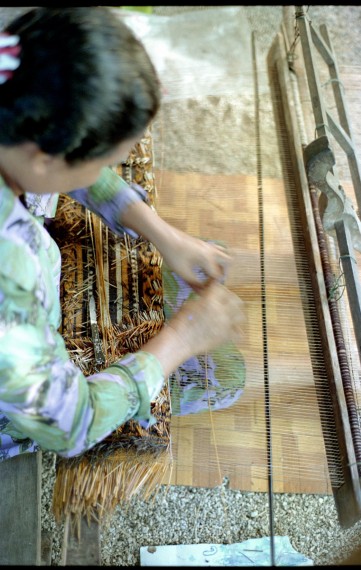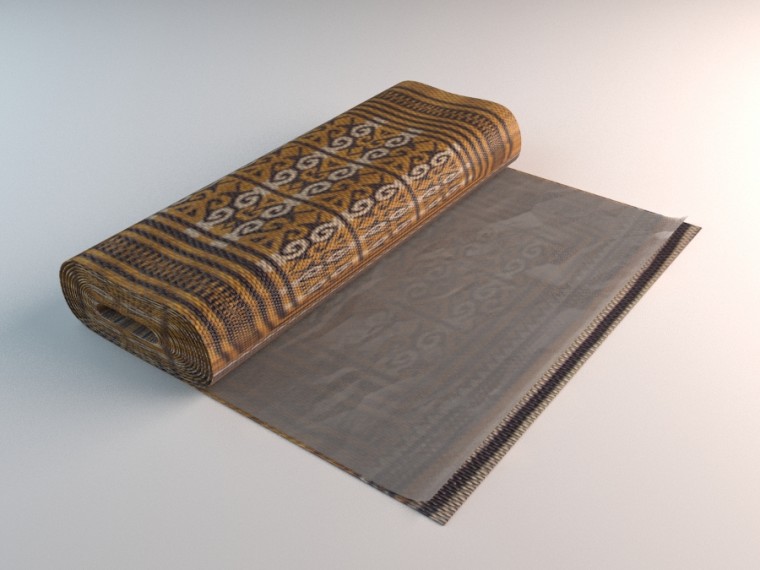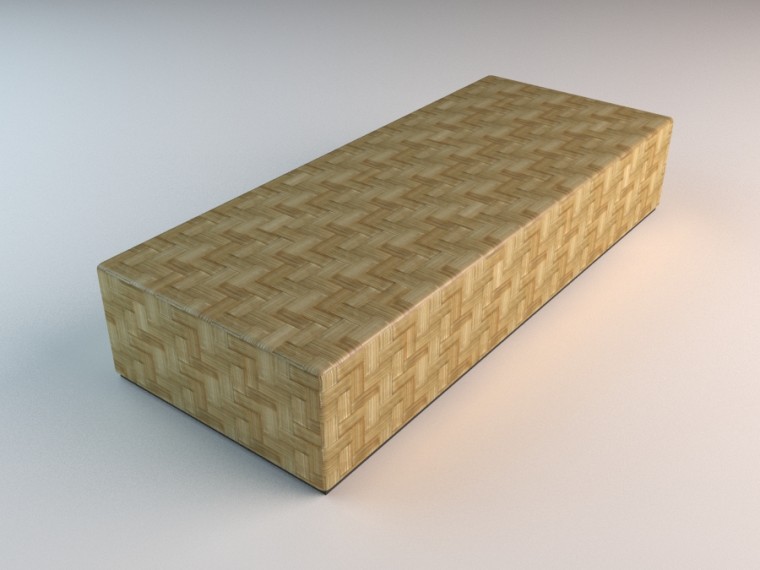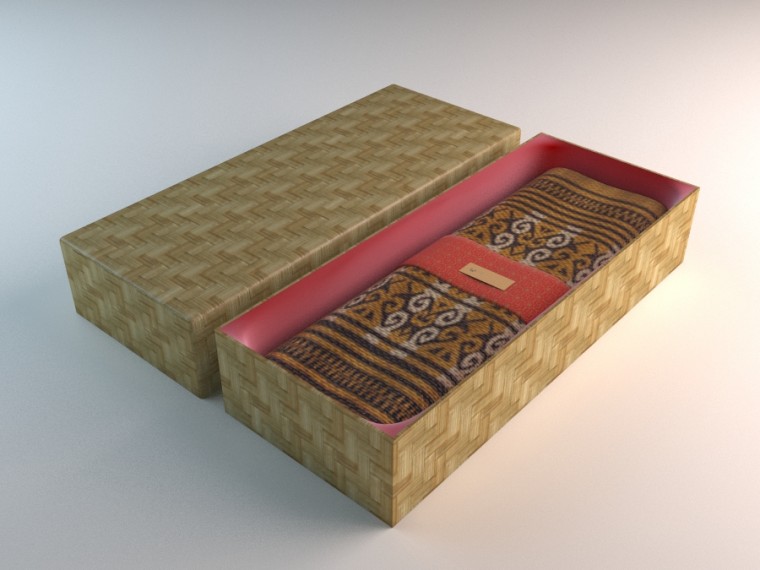SAARC SUMMIT 17 Presidential Gift
Rush mat
From the Maldives, Indian Ocean
Late 19th century AD
The Maldives are an archipelago of over a thousand islands grouped into atolls in the Indian Ocean. Although there is linguistic and cultural uniformity throughout the archipelago, some atolls have specialized in specific economic activities. For example, the rush that is used to make mats like this grows particularly well in the south on Suvadiva atoll. Despite a short period of decline in the early twentieth century, Suvadiva has remained the centre of mat production in the Maldives.
The rush is picked and left to dry in the sun. The different colours are traditionally obtained with dyes made from local plants. The work is done by women. From an early age, young girls start weaving samplers which they will use as inspiration for patterns throughout their life. Depending on their size and design, the larger mats are used as furnishings on beds and chairs and for prayers. Although of unidentified use, the size of this particular mat suggests it was probably used for sleeping. Smaller decorative mats are increasingly being made for the tourist market.
A. Forbes and A. Fawzia, Weaving in the Maldive Islands, British Museum Occasional Paper 9 (, 1980)
N.F. Munch-Petersen, ‘The Maldives: history, daily life and art-handicraft’, Bulletin du CEMOCI, I (1982), 1/2
CONTEXT
Title: The voyage of Francois Pyrard of Laval to the East Indies, the Maldives, the Moluccas and Brazil, v.1
Author: Payard, Francois
Collection: Southeast Asia Visions
“The well-known Maldive mats (M. tudu kuna) are made only in Suvdiva atoll, from a rush (M. lzáu) which thrives best there. In delicacy of pattern, in happy combination of the only three colours adopted,_black, yellow-brown, and white,-and in permanency of dye, th fine mats surpass anything in the same line the world over, and have justly obtained unqualified commendation. The best quality are worked up on Gaddá island, the ordinary mats at flavara-Tinadil, and a small kind o Gemanáfurhi” (Bell, Rep., 88). The large fine mats are valued at Es. 5 to Es. 6 even at M1é, and can rarely be procured in Ceylon under Es. 8 to 10 (ib., 106). 2
“H.C.P Bell – Archeologist of Ceylon and the Maldives”
by: Bethia N. Bell ND Heather M. Bell
“ Bell’s report praised the Maldives mats, made only in Suvadiva Atol from a rush which best thrives there, for their delicacy of pattern in three colours, black yellow-brown and white, and their permenancy of dye. On his return to Ceylon he began a practice of sending these mats as gifts; immediately to General Bell and to Sir John Douglas, the Colonial Secretary in Ceylon; and two years later Albert Gray. The General, in thanking








